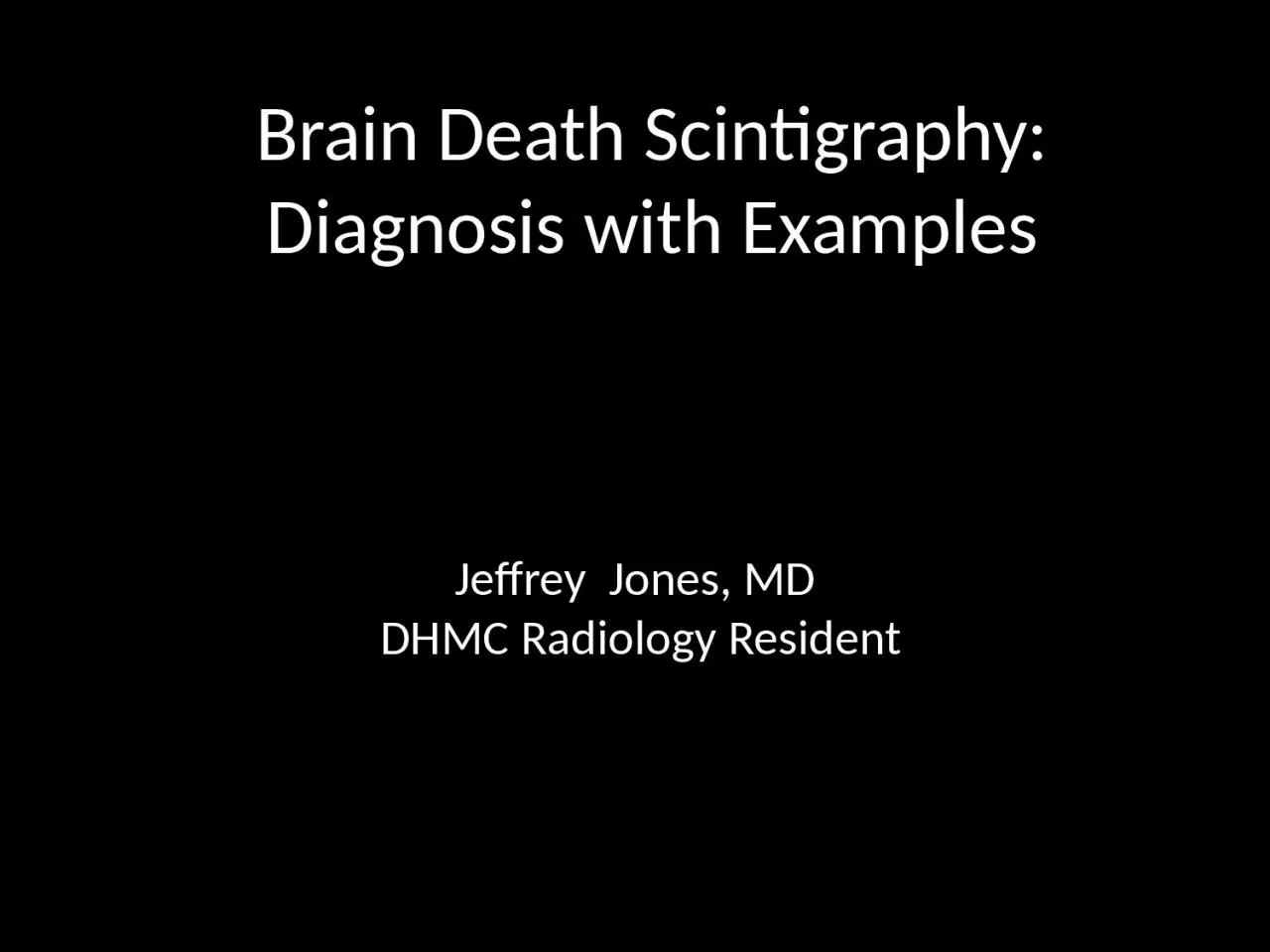

Diagnosis with Examples Jeffrey Jones MD DHMC Radiology Resident Brain Death Scintigraphy Role Determine if there is cerebral blood flow Brain without a blood supply is dead Elevated ICP from tissue edema or mass exceeds systemic arterial pressure ID: 1014709
Download Presentation The PPT/PDF document "Brain Death Scintigraphy:" is the property of its rightful owner. Permission is granted to download and print the materials on this web site for personal, non-commercial use only, and to display it on your personal computer provided you do not modify the materials and that you retain all copyright notices contained in the materials. By downloading content from our website, you accept the terms of this agreement.
1. Brain Death Scintigraphy: Diagnosis with ExamplesJeffrey Jones, MD DHMC Radiology Resident
2. Brain Death ScintigraphyRole:Determine if there is cerebral blood flowBrain without a blood supply is deadElevated ICP from tissue edema or mass exceeds systemic arterial pressure no intracranial blood flow brain deathRadiotracers used at DHMC (Lipophilic type)radiotracer flows to brain diffuses across blood brain barrier extracted by brain tissue and trappedTypesTc-99m HMPAO (Ceretec®)Tc-99m ethylene cysteinate dimer (ECD) (Neurolite ®)
3. DHMC Brain Death ProtocolPatient preparationNone, prefer not hypothermicRadiopharmaceuticalTechnetium-99m HMPAO or ECDInstrumentation gamma camera with low energy all purpose parallel hole collimatorProcedureHead in anterior projectionDose administeredImaging started 15-30 minutes laterSPECT imaging of head performed for 20 minutesReformats created in axial, sagittal, and coronal planes
4. Generalized Findings“Normal”: Symmetric uptake in all portions of brainBrain injury (not brain dead):Patchy areas of absent or diminished uptakeBrain Death Findings:No radiotracer uptake in ALL portions of the brain including the cerebellum and brainstem“Empty box” appearance
5. DHMC Examples
6. Brain Death - Patient 1No intracranial blood flow or radiotracer uptake in all regions of the brainExpected extra cranial scalp, skull base, and soft tissue activity which is increased in brain death (shunting of blood)
7. Brain Death - Patient 2
8. Brain Death – Patient 3
9. Brain Injury Patient 1There are multiple scattered focal perfusion defects within the brain (but there is cerebral perfusion)
10. Brain Injury-Patient 2 Focal perfusion defect in the right cerebellar hemisphere
11. “Normal” Symmetric cerebral perfusion with no focal defects
12. Sample Brain Death Dictation
13. ReferencesConrad GR et al: Scintigraphy as a confirmatory test of brain death. Semin Nucl Med. 33(4):312-23, 2003Donohoe KJ et al: SNM practice guideline for brain death scintigraphy 2.0. J Nucl Med. 40(3):198-203, 2012StatDx®